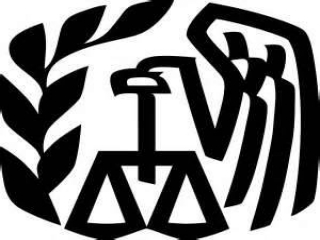 |
IRS Encourages Taxpayers to Check Their Withholding; Checking Now Helps Avoid Surprises at Tax Time
Source:
irs.gov
- Oct 31, 2017
IR-2017-181, Oct. 30, 2017
WASHINGTON — As the end of 2017 approaches, the Internal Revenue Service today encouraged taxpayers to consider a tax withholding checkup. Taking a closer look at the taxes being withheld now can help ensure the right amount is withheld, either for tax refund purposes or to avoid an unexpected tax bill next year.
The withholding review takes on even more importance given a tax law change that started last year. This change requires the IRS to hold refunds a few weeks for some early filers claiming the Earned Income Tax Credit and the Additional Child Tax Credit. In addition, the IRS and state tax administrators continue to strengthen identity theft and refund fraud protections, which means some tax returns could require additional review time next year to protect against fraud.
"With only a few months left in the year, this is a good time to check on your withholding," said IRS Commissioner John Koskinen. "How much you choose to withhold is a personal choice, but checking now can reduce the chance for a surprise tax bill when you file in 2018."
By adjusting the Form W-4, Employee’s Withholding Allowance Certificate, taxpayers can ensure that the right amount is taken out of their pay throughout the year. Having the correct amount withheld from paychecks helps to ensure that taxpayers don’t pay too much tax during the year – and it also means taxpayers have money upfront rather than waiting for a bigger refund after filing their tax return.
The IRS also cautions people to be careful and check to make sure they have enough withheld from their paychecks. Under-withholding can lead to a tax bill as well as an additional penalty. The IRS especially encourages people with a second job, such as those in the sharing economy, or with a major life change to check whether they are having enough withheld or if they are making the appropriate estimated tax payments.
In many cases, a new Form W-4, Employee’s Withholding Allowance Certificate, is all that is needed to make an adjustment. Taxpayers submit it to their employer, and the employer uses the form to figure the amount of federal income tax to be withheld from pay. But remember – it takes time for employers to process these payroll changes, so any adjustments should be made quickly so it can take affect during the final pay periods of 2017.
The IRS offers several online resources to help taxpayers bring taxes paid closer to what is owed. They are available anytime on IRS.gov. They include:
IRS Withholding Calculator – Online tool helps determine the correct amount of tax to withhold.
IRS Publication 505 – Tax Withholding and Estimated Tax.
Tax Withholding – Complete information on withholding, estimated taxes, FAQs and more.
Self-employed taxpayers, including those involved in the sharing or gig economy, can use the Form 1040-ES worksheet to correctly figure their estimated tax payments. If they also work for an employer, they can often forgo making these quarterly payments by instead having more tax taken out of their pay.
People Working in the Sharing Economy
The IRS encourages people in the sharing or ‘gig’ economy who also have a job with an employer to take a close look at their withholding. Doing so can help avoid unexpected tax issues.
Some Refunds Delayed in 2018
The IRS wants taxpayers to be aware of several factors that could affect the timing of their tax refunds next year. Due to a December 2015 law, the IRS cannot issue refunds on tax returns claiming the Earned Income Tax Credit or the Additional Child Tax Credit before mid-February. Under the change required by Congress in the Protecting Americans from Tax Hikes Act, the IRS must hold the entire refund – even the portion not associated with the EITC and ACTC.
This law change, which went into effect in 2017, helps ensure that taxpayers get the refund they are owed by giving the IRS more time to help detect and prevent fraud.
Stronger Security Filters and Tax Refund Processing
As the IRS steps up its efforts to combat identity theft and tax refund fraud through its many processing filters, legitimate refund returns sometimes get delayed. While the IRS is working diligently to stop fraudulent refunds from being issued, it is also focused on releasing legitimate refunds as quickly as possible.
The IRS, state tax agencies and the private sector tax industry continue to work together to fight fraud through their Security Summit partnership. Additional safeguards will be set in place for the 2018 filing season.
CLICK SOURCE TO ACCESS THE OFFICIAL IRS WEB SITE AND ALL ITS INFORMATIVE ARTICLES, COUNTLESS FORMS AND INSTRUCTIONS, VIDEOS, ETC
Category: General Business
|

